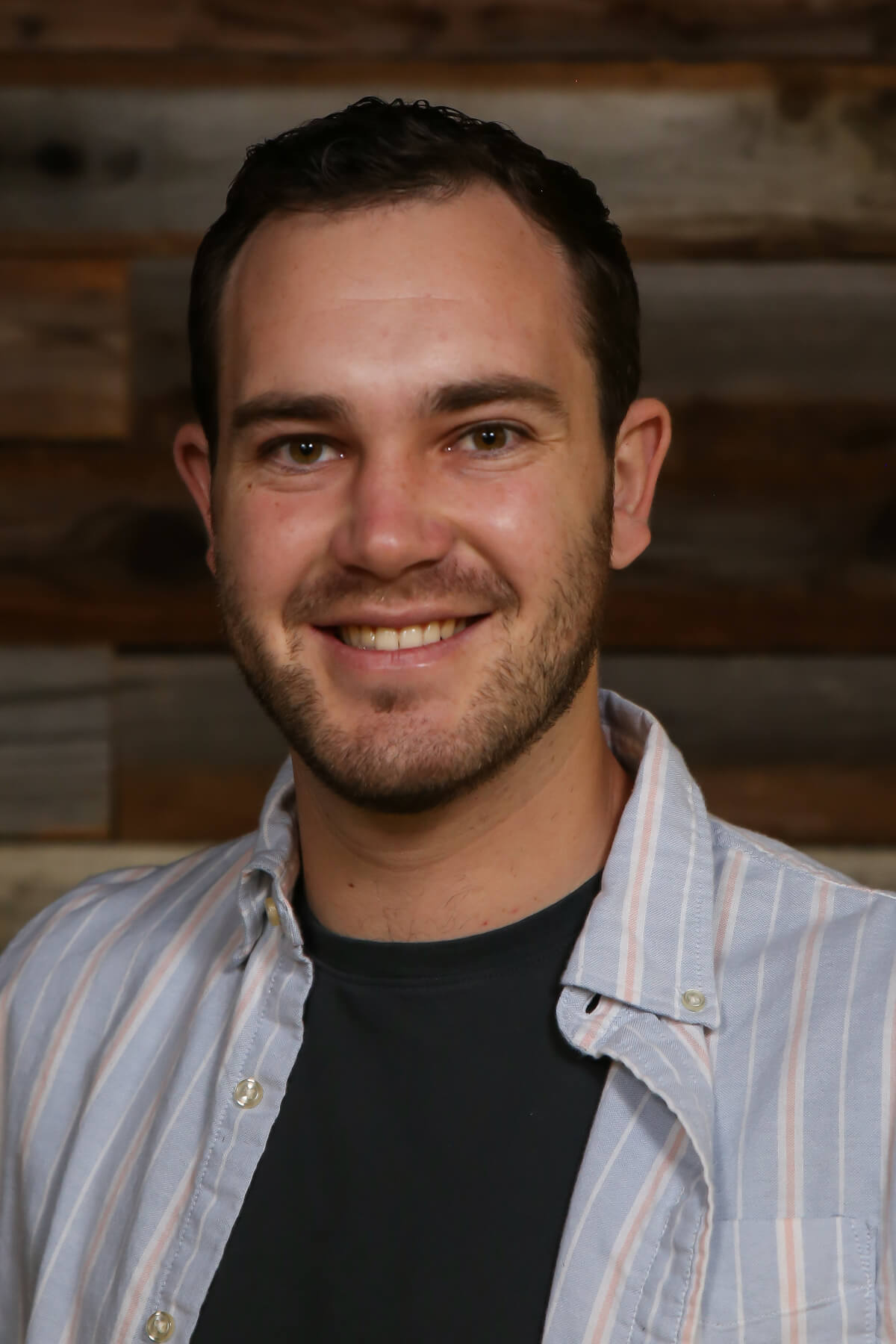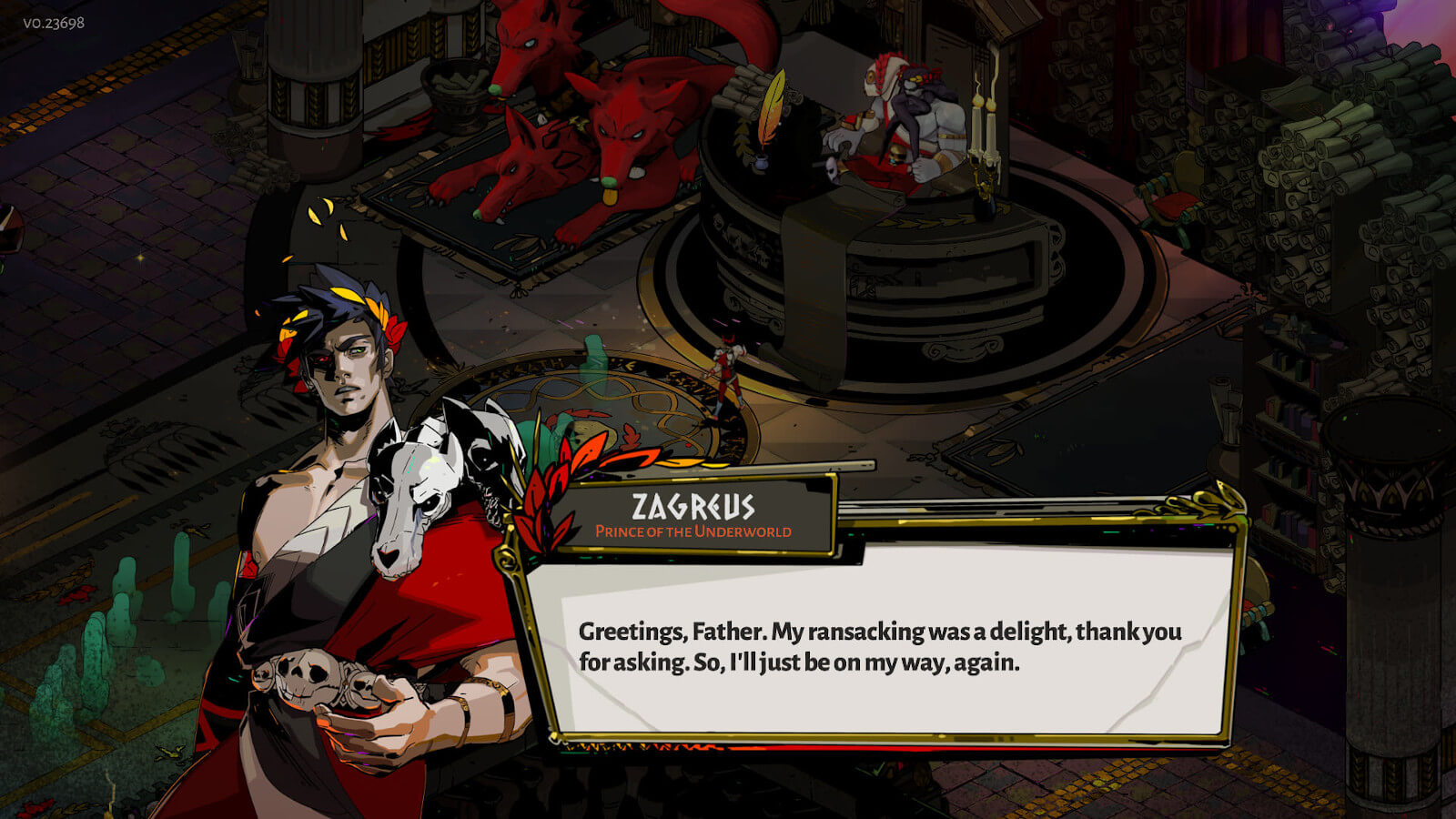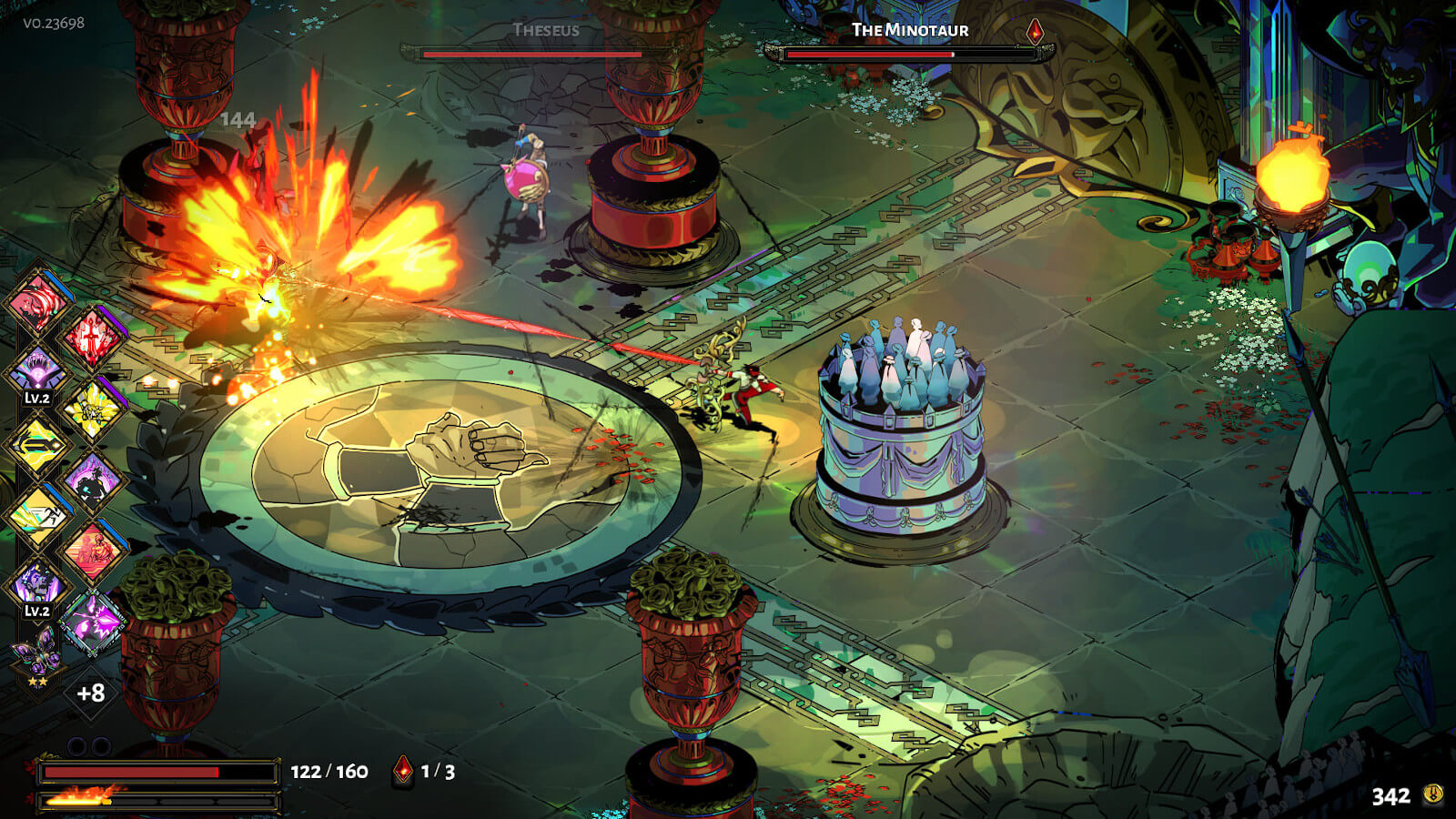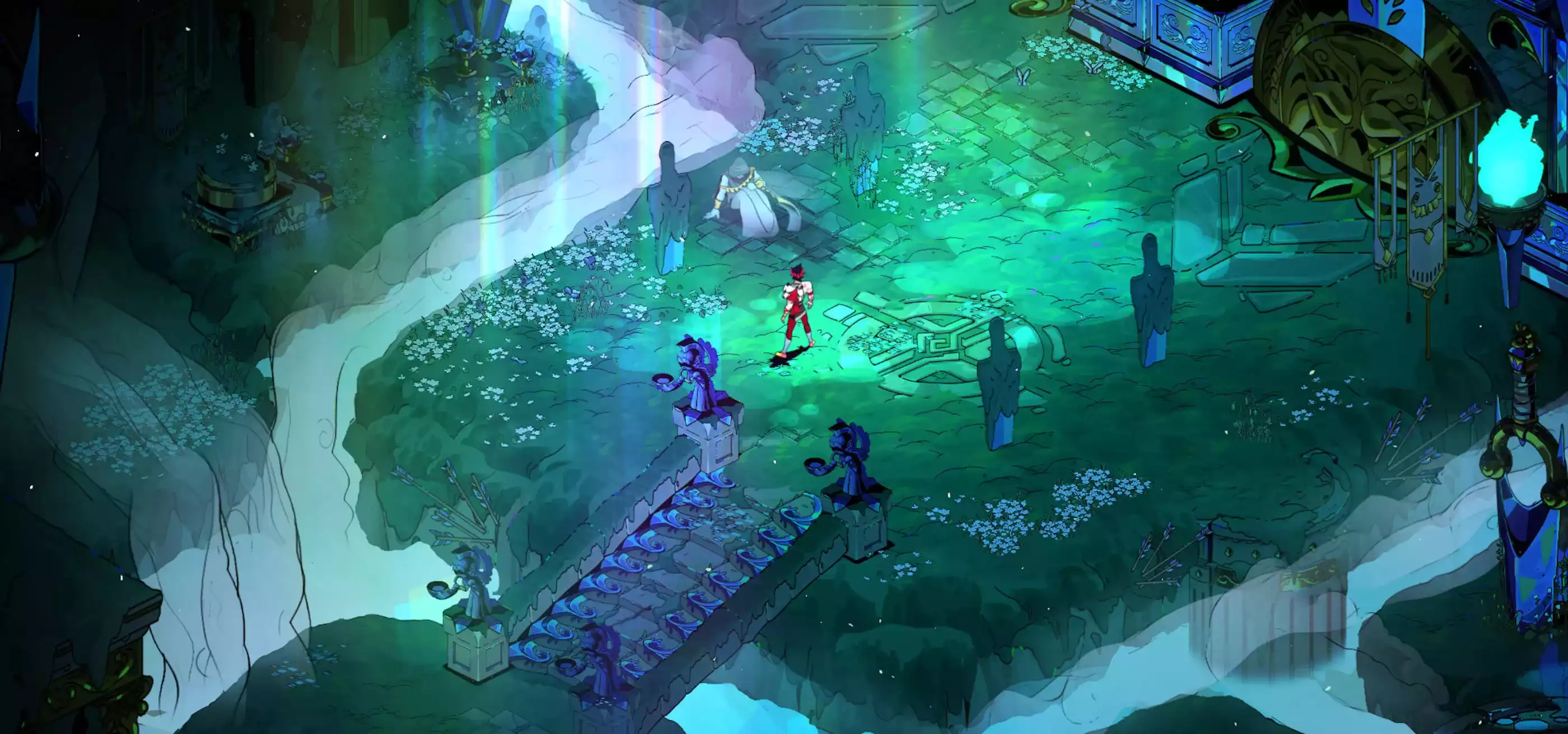There are many words one could use to describe the game Hades, a popular roguelike adventure from indie developer Supergiant Games: gorgeous, colorful, fast-paced, entertaining. It’s also, by many accounts, quite challenging — sometimes brutally so. Then again, any game that sees you battling through four stages of the mythical Greek underworld, fighting off randomized waves of powerful gods and monsters along the way, is probably no walk in the park.

That said, DigiPen graduate Eduardo Gorinstein (2017, BS in Computer Science and Game Design) admits he’s no slouch at the game — and for good reason. As one of the Supergiant designers who oversaw many aspects of the game’s levels, boss fights, and more, he’s had almost three years of practice.
“I’m definitely not as good as our best players, but yeah, I am pretty decent at it,” he says.
Released in September for PC, Mac, and Nintendo Switch, Hades is by all indicators a critical hit, holding a solid aggregate score of 93 on Metacritic. It’s been named 2020’s game of the year by outlets like IGN, Eurogamer, and Polygon. In November, the game received two 2020 Golden Joysticks Awards, winning the categories for Best Indie Game and Critic’s Choice. The game has also become something of a streaming favorite for many high-level players.
“It’s insane, honestly,” Gorinstein says about the game’s runaway success. “We had a certain expectation that it would do well. We didn’t know how well.”
For Gorinstein, Hades is the first professional game he’s worked on from beginning to end, having joined Supergiant Games in January 2018, right as the initial concept for the game was starting to take shape. Prior to that, he had been working for close to eight months, first as an intern and later as an associate game designer, on Gazillion Entertainment’s Marvel Heroes. While it was a good first job out of college, Gazillion was forced to close its doors in late 2017 after losing the Marvel license, causing Gorinstein to look for his next opportunity sooner than expected.
“I was a huge fan of Supergiant since their first game, and I always knew they were a 13-person company. So I never expected an opportunity to arise where I would be available and they were available at the same time,” Gorinstein says. “They just happened to tweet it out that they were looking for a game designer, and they had just finished their last game, Pyre, which I was a big fan of. So worlds kind of aligned, and that was my next job.”
Gorinstein was one of a small handful of new hires the studio brought on to help with their latest project, a game in which players take on the role of Zagreus, son of Hades, on a mission to escape his father’s dominion. Throughout the player’s journey, Zagreus mingles and interacts with a wide cast of characters from the Greek pantheon — interactions that infuse the game with a satisfying narrative arc often lacking in the roguelike genre.
“It’s definitely got that Diablo-style hack-and-slash gameplay, but at the same time, there’s a family drama going on, and every time you die, you go back and you talk to your friends and develop your relationships further,” Gorinstein says.

Early on in the game’s development, Gorinstein was tasked with exploring ideas for creating the game’s levels and combat chambers. Since the game would be built as a roguelike — a genre in which developers rely on the randomization of items, environment layouts, and enemy encounters — Gorinstein naturally looked into level layouts that could be assembled in a modular fashion. It didn’t take long to discover, however, that the typical roguelike approach to level design would not fit easily with Supergiant’s signature, hand-crafted approach to art direction.
“Roguelikes are known for their procedural generations to some capacity, and Supergiant is known for its very detailed, painterly art aesthetic. So those two things don’t line up very naturally. It was a lot of exploration on that front, going back and forth with the artists, trying to figure out: Can we randomize the obstacles within a room? Can we randomize the traps? What sort of dials can we give ourselves to randomize? And it ended up being pretty limited what we could do within a room,” Gorinstein says. “We found that it was actually more effort to try and make a room modular versus just making more rooms and trying to get the variety to come from the combat or the enemies.”
You can check out the following Twitter thread in which Gorinstein gives a behind-the-scenes look at how the level designs came together for each section of the game.
Hey #Blocktober! I am thrilled to be able to share some behind-the-scenes looks at the Level Design in Hades.
To kick this off, check out this Elysium chamber timelapse showing my design pass through @_joannetran’s art pass. 1/19#HadesGame #leveldesign #gamedev pic.twitter.com/YZbIZk59Ri
— Ed Gorinstein (@EdGorinstein) October 1, 2020
As the project progressed in scope, Gorinstein also took on the role of combat designer for most of the game’s enemies and bosses. When asked about his proudest contributions to Hades, Gorinstein points to his work as a boss designer, an area where, over the course of the project, he came to take on greater levels of trust and responsibility from studio leadership.
“Greg Kasavin, the creative director, was able to give me a starting point for some of the bosses. Like Theseus is a character in Greek myth. He has this rivalry with the minotaur. But we know he’s a Greek soldier and he would have a spear and a shield, so that gives me a framework to work off of. The hydra has regenerating heads, but he has the main head. The whole myth behind it is that once you sever all the side heads, that’s when you can kill the main head,” he says. “So that sort of stuff influenced the structure of the fights.”
After providing the concept and initial prototyping for a boss’s movements and attacks, he would also work directly with the artists and animators on communicating those ideas, as well as make sure that the results came out correctly in the translation to visual implementation. From there, Gorinstein and company took advantage of data gathered from their Early Access players to make changes, fixes, and improvements.
“I definitely feel my skills as a designer have become more formalized,” Gorinstein says. “I think what Supergiant has taught me is how to not only get better at the content I produce but how to see it through to the end, how to take a thing that I’ve done and then make sure that the people I need to work with can understand what it is and do their best work on it.”
After working on numerous boss battles — from the early confrontations with the fearsome Furies to the final showdown with the god of the underworld himself — Gorinstein still has a clear favorite.

“The thing I was proudest of was the Theseus and Minotaur boss fight,” he says, pointing to a late-game encounter in Elysium. “The end product is super exciting, just because each character has their own personality in their attack styles. When I watch people play the game, they approach the fight in different ways, and they have their own strategies on who to take down first.”
Looking back at his first three years with the studio, Gorinstein says his entire experience has been a pleasant surprise, and he credits the company for making good on its commitment to work-life balance, including through tangible policies ranging from mandatory vacation time for all employees to shutting off all work notifications during weekends.
“They had a philosophy from the very beginning when they hired the new batch of people to focus on employee sustainability, because they had learned from their previous three games.” he says. “For Hades they wrote it down and they made it a core company value to make the work mold around your life rather than the other way around.”
Of course, there was another important factor that’s contributed to his positive experience with the studio so far. Even after so much time spent building and refining the game, Gorinstein says he’s still not ready to move on from Hades for good — a testament to the game’s quality.
“It’s not common to have a game that is fun to play after you’ve developed it for three years, but I still boot up Hades post-launch and play runs, because I still enjoy the game,” he says. “There’s something about the game where I never got bored of it.”
